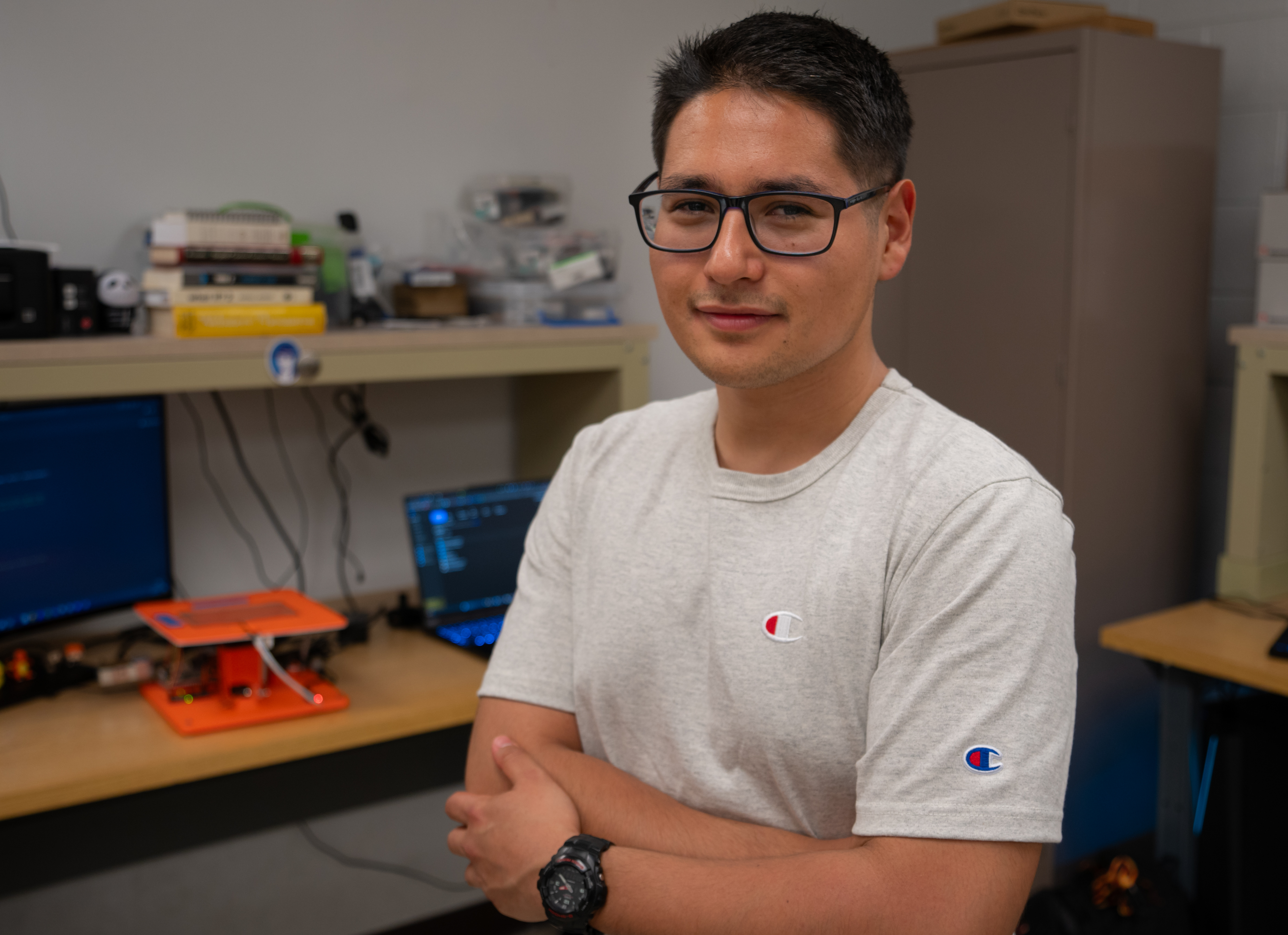Diego Said Chavez Arana’s paper will appear in the Institute of Electrical and Electronics Engineers journal Communications Letters. Omar Alejandro Garcia Alcantara’s paper will appear as an American Control Conference paper.
“Publication with ACC is very challenging. ACC is one of the two top conferences in control systems,” said Luis Rodolfo Garcia Carrillo, electrical and computer engineering assistant professor. “Their achievement is truly well-deserved.”
The field of automatic control studies how to make systems behave in a desired manner using feedback mechanisms such as sensors and actuators and proper controller designs, for example algorithms running in a computer. Automatic control plays a critical role in almost every aspect of our daily lives, including in home appliances, automobiles, aircraft, biomedical devices, manufacturing systems, the power grid, robots and autonomous vehicles.
Garcia Carrillo leads the Unmanned Systems Laboratory at NMSU which currently includes three doctoral students and one master student from the Electrical and Computer Engineering Department; one master student from the Computer Science Department; and around 10 undergraduate students from different departments of the College of Engineering.
“My research is multidisciplinary and involves the areas of control systems, robotics, intelligent systems, computer vision and neuromorphic where his multidisciplinary research involves the areas of control systems, robotics, intelligent systems, computer vision and neuromorphic computing,” Garcia Carrillo said. “My theoretical outcomes are applied most of the time to unmanned aircraft systems. My research activities are currently funded by the National Science Foundation and the Department of Energy.”
Arana’s research involves a sophisticated system that uses sensors to detect and balance objects.
“This sophisticated system calculates exactly how much force and in which direction to apply to keep the object stable,” Arana said. “This is being done using a Spiking Neural Network. SNNs are a type of artificial intelligence that mimics the way our brains process information, but it’s specialized in handling time-sensitive tasks. So, just like you might react quickly to catch something falling, an SNN reacts rapidly to changes in data to make decisions and maintain stability.”
Arana and Alcantara are both pursuing doctoral degrees in electrical and computer engineering.
“I chose this field because I believe artificial intelligence will change the world. There are plenty of advantages and applications of AI in any field. Since my background is in aerospace engineering I wanted to develop control systems in unmanned air vehicles for different purposes,” Arana said.

